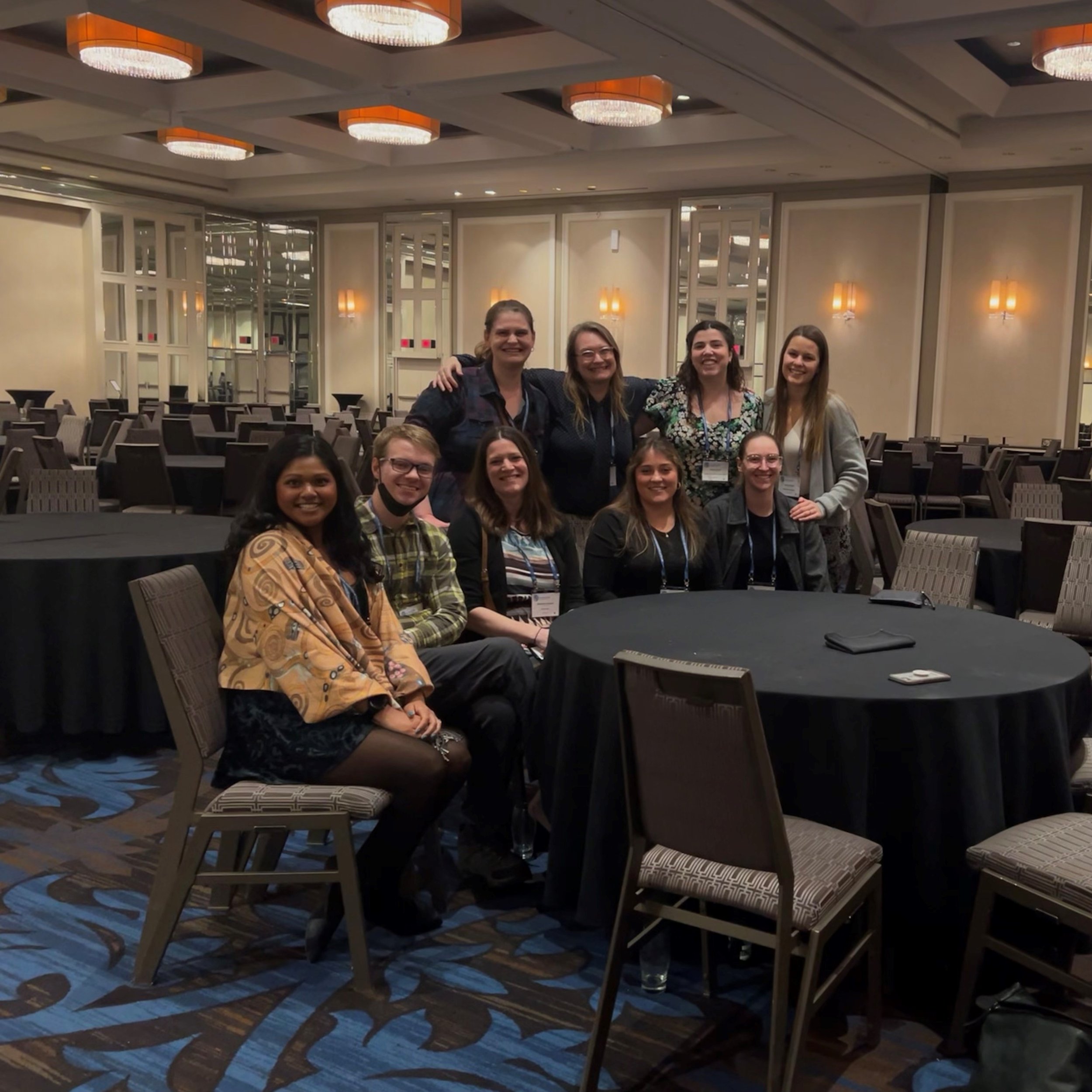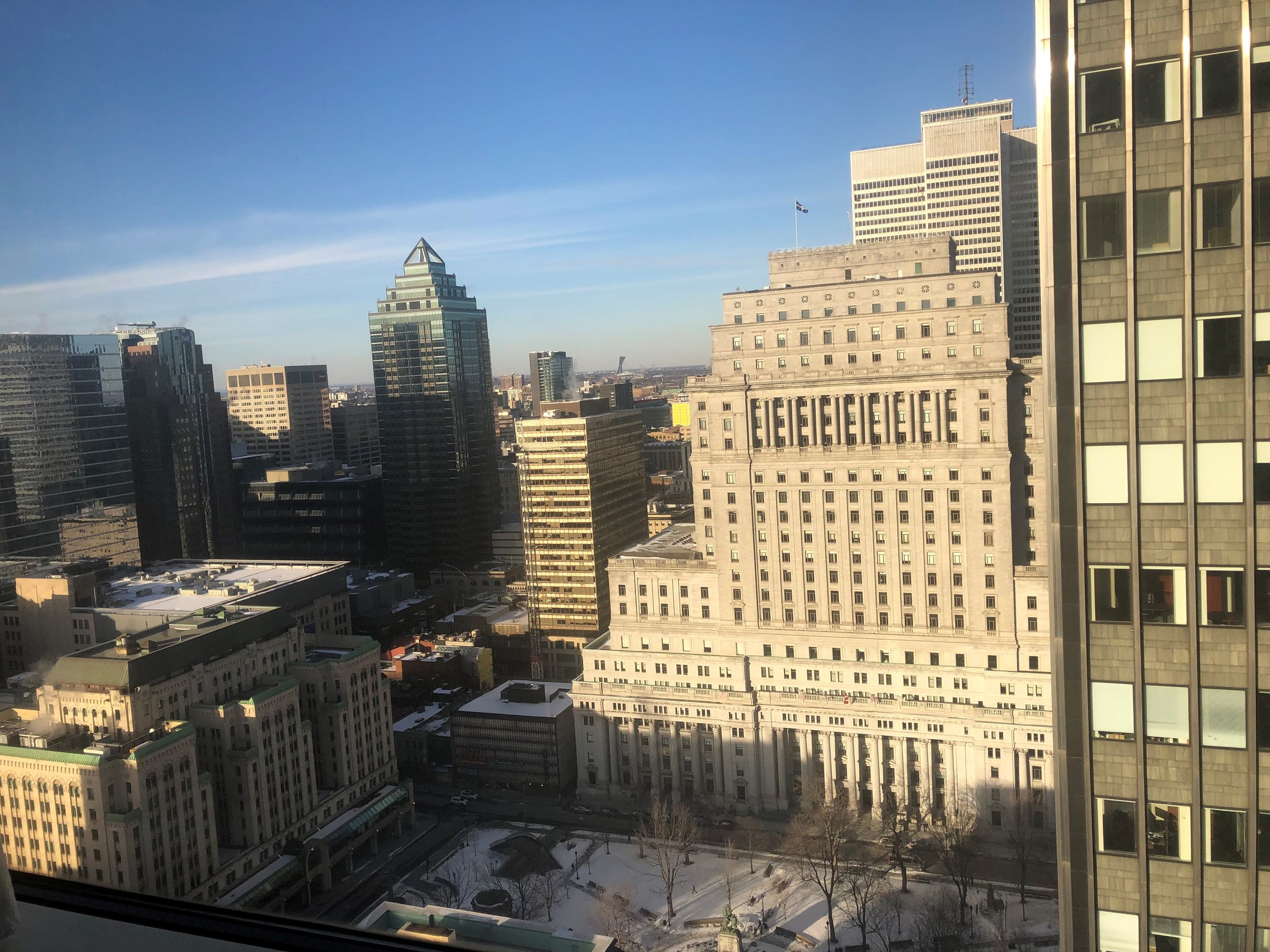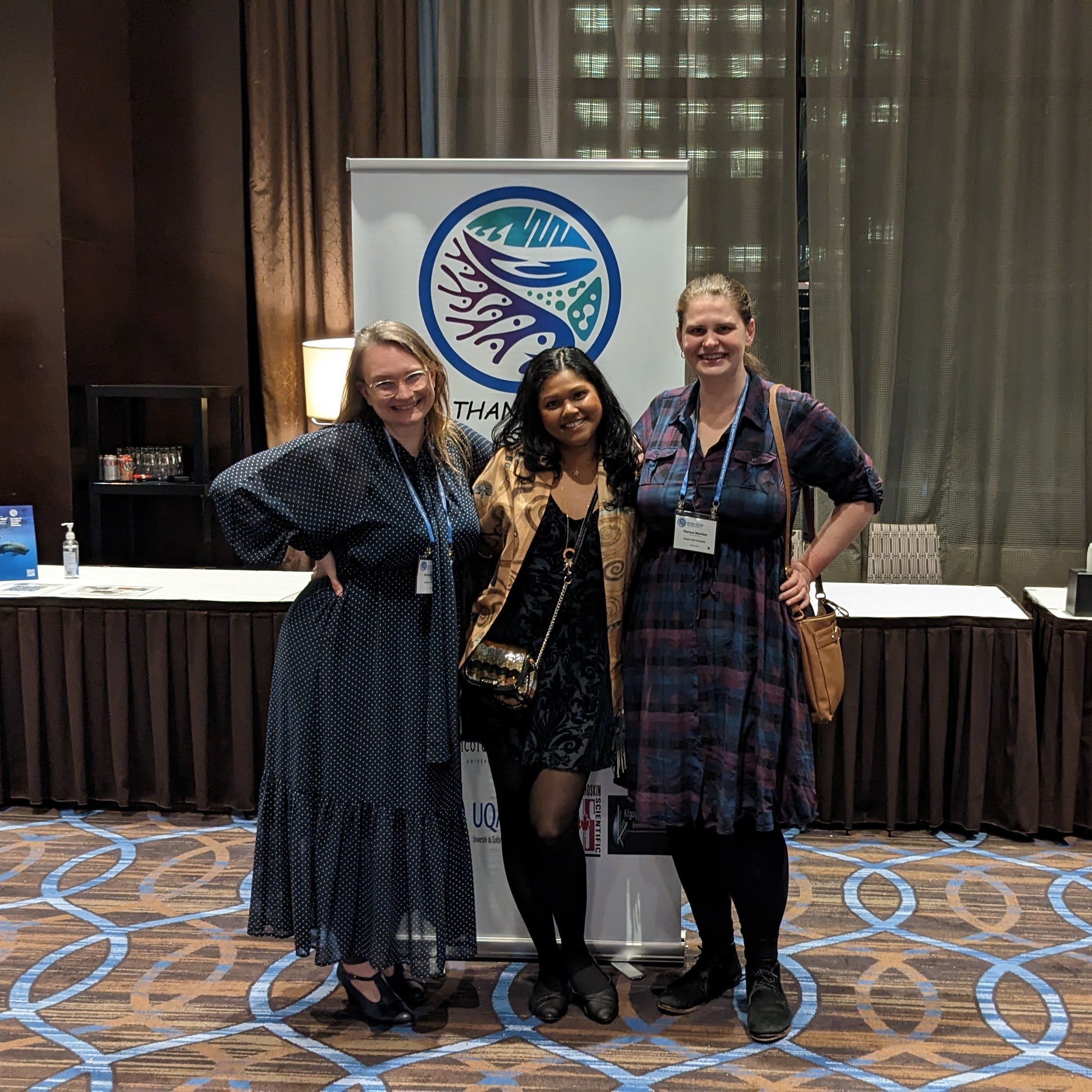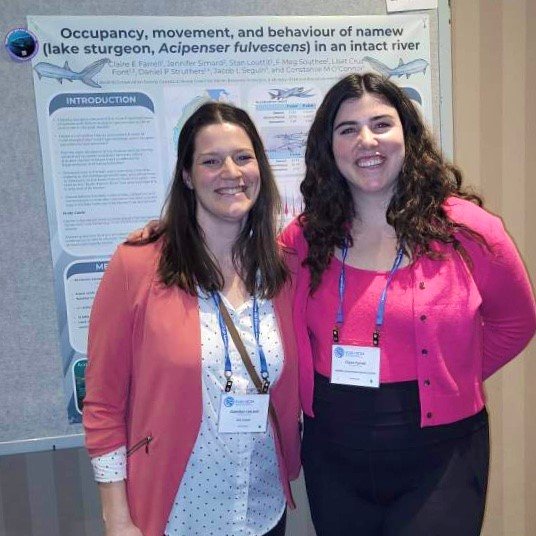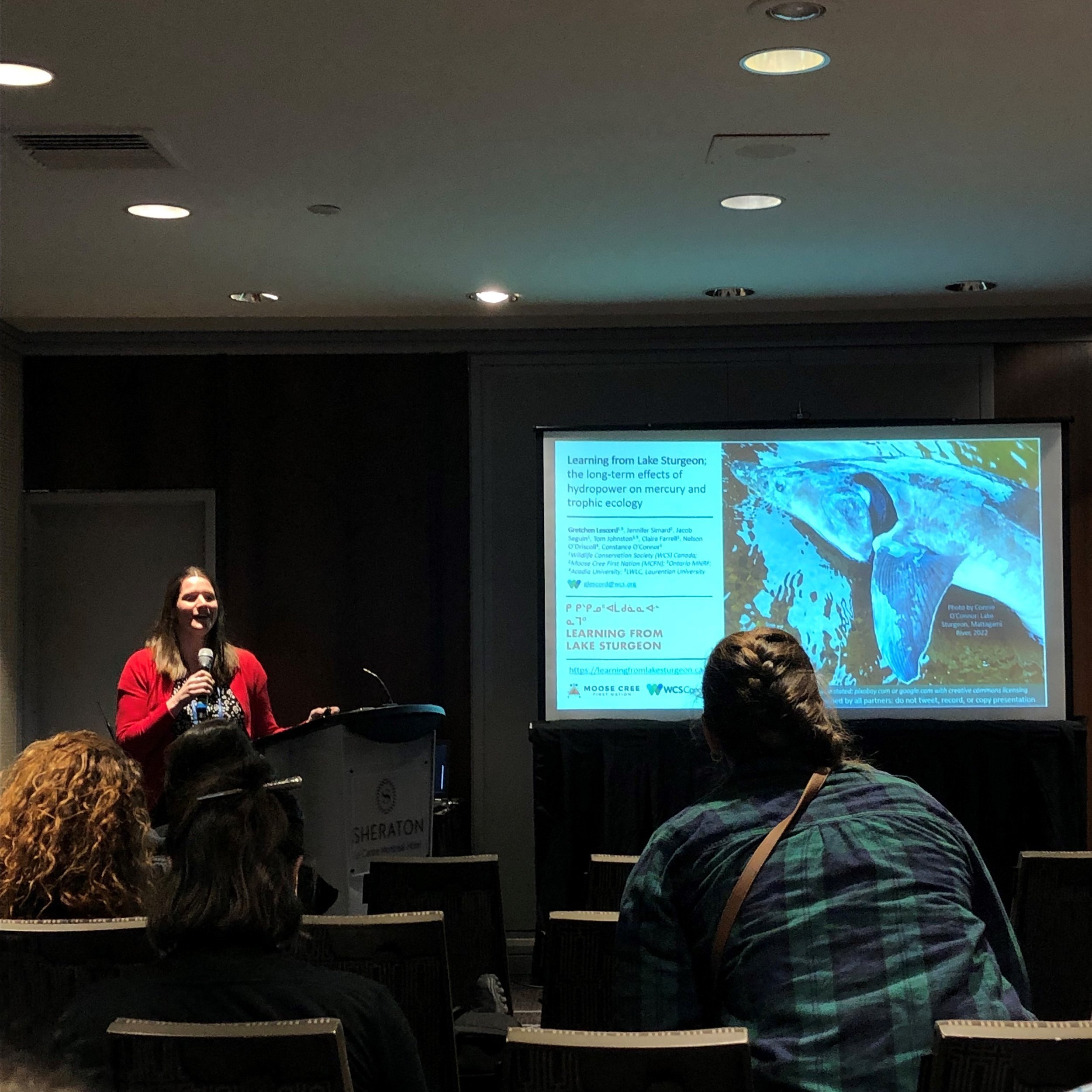LEARNING IN A DIFFERENT WAY AT A SCIENTIFIC CONFERENCE
In the Learning from Lake Sturgeon program, we are most often learning from namew (lake sturgeon) in the study rivers of the Moose Cree Homeland. This February, our team got a chance to teach and learn in a different way – as part of the Society of Canadian Aquatic Sciences (SCAS) conference in Tiohtià:ke, also called the big city of Montreal, Quebec which is located on unceded Indigenous lands of the Kanien’kehá:ka Nation.
A scientific conference has historically been a very Western science-based gathering, where typically university researchers and student share their findings and thoughts. However, much like the Learning from Lake Sturgeon program, the SCAS conference hoped to bring different Knowledge Systems together – both Traditional Ecological Knowledge from Indigenous Peoples and communities, as well as Western science research – by including three Indigenous-focused sessions on partnerships and fish work.
As part of the conference, our team shared what we’ve learned from namew so far, and what we’re still hoping to learn. Our team also learned about findings, lessons, perspectives, and priorities of other Indigenous researchers, Guardians and organizations, as well as from Western science researchers.
At the conference, one of our team members, Claire Farrell, sat on a career panel, to help students hear from people on different career paths. Other team members presented an oral presentation (Gretchen Lescord) and poster sessions (Claire Farrell and Keisha Deoraj), to help others hear about and learn from our work.
Overall, there were many reflections over the few days about what work-on-water – “fisheries” or “aquatic science” – is, and where it’s headed. One of the take-home messages from this conference is that work-on-water has changed. We have made good progress in gender equity and representation (women are now leading a lot of the work that was historically male-dominated). Our own team is an example of that – most of the people leading the Learning from Lake Sturgeon project are women! However, there is more, good work to do, to make work-on-water a more representative and inclusive space for Indigenous and BIPOC folks, and those with disabilities and health conditions.
As the conference wrapped up, an echoing message in our minds drove home the importance of collaborative conservation work: standing with Indigenous communities. The only way forward for work-on-water is to make sure that Indigenous Peoples and youth have their voices and ideas heard and realized, so that fish and water can be protected now and into the future.
